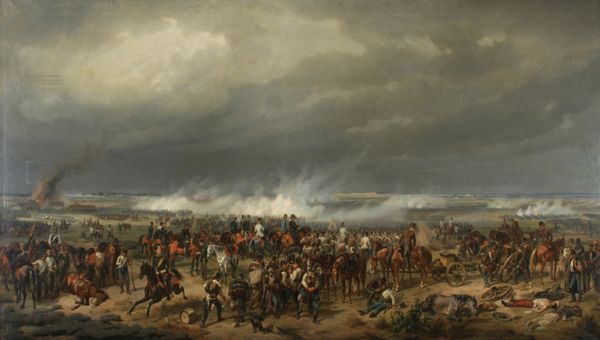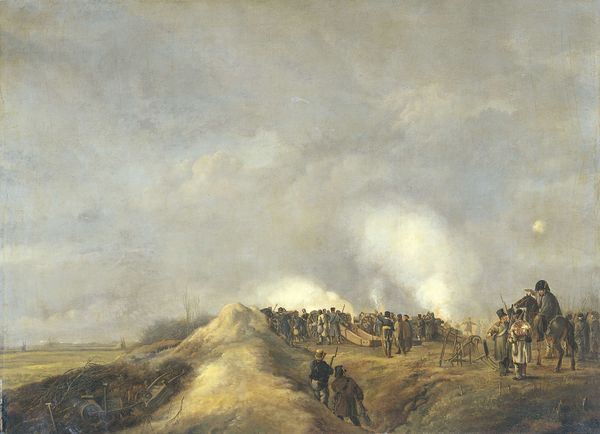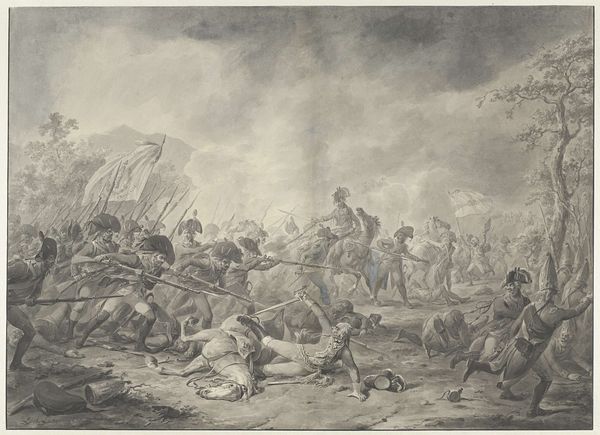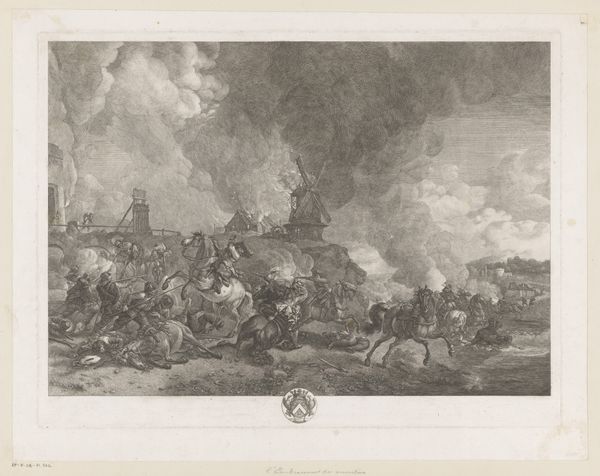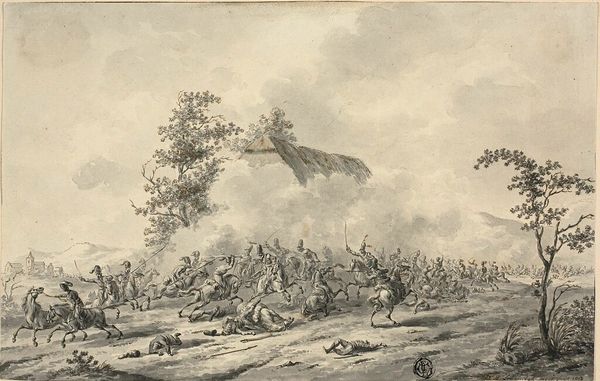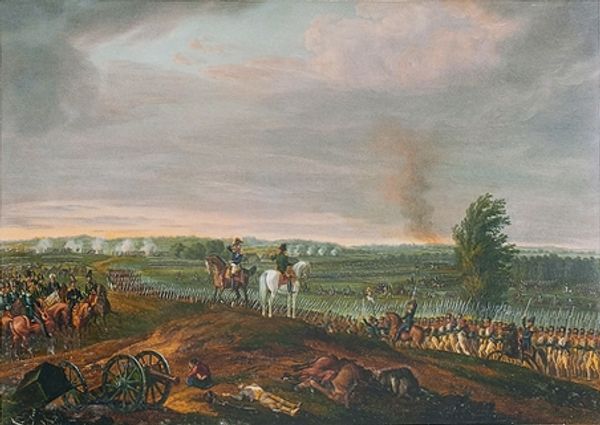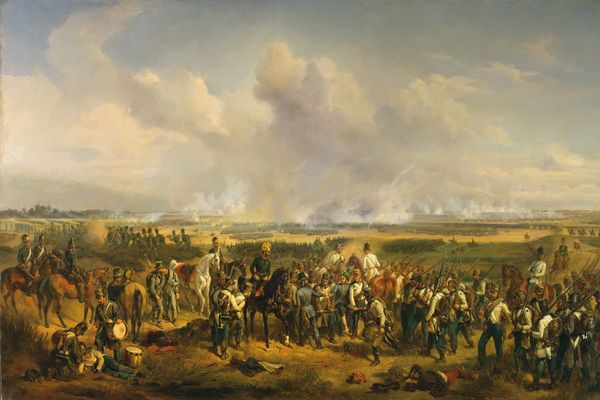
painting, watercolor
#
narrative-art
#
painting
#
landscape
#
watercolor
#
coloured pencil
#
romanticism
#
watercolour illustration
#
history-painting
Dimensions: height 450 mm, width 680 mm
Copyright: Rijks Museum: Open Domain
Johann Hürlimann captured the Battle of Quatre-Bras in 1815 with watercolor and pencil, presenting a scene thick with the fog of war. Note the central figure on horseback, likely the Prince of Orange, around whom the chaos swirls. Equestrian figures have long symbolized leadership and nobility, echoing back to ancient Roman equestrian statues and Renaissance portrayals of powerful rulers. The horse itself is a potent symbol, representing strength and control, but here, amidst the smoke and fallen soldiers, it also embodies the tumult and unpredictability of battle. Consider the broader scope: the obscured landscape, the struggling masses. These elements tap into a collective memory of conflict, reminiscent of battle scenes depicted across centuries, each carrying the weight of human struggle. The psychological impact of such scenes is profound. They evoke primal fears and anxieties related to violence and mortality, compelling viewers to confront uncomfortable truths about human nature. Ultimately, Hürlimann's image reveals how symbols of power and chaos are continuously reinterpreted and redefined, reflecting our enduring fascination with—and fear of—war.
Comments
No comments
Be the first to comment and join the conversation on the ultimate creative platform.

